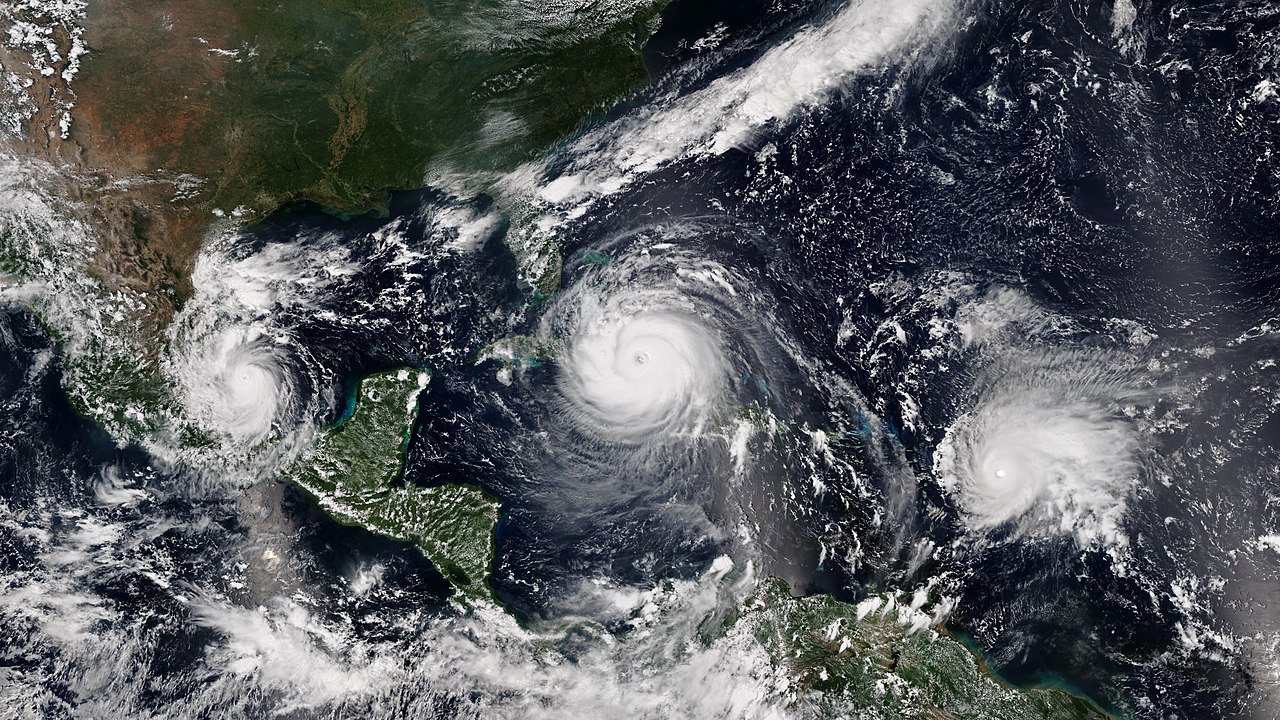
A lot of big storms.
Warm air and cold air don't mix very nicely – because whenever they do, storms tend to follow.
Your job, as a Turbulent Location Estimator, is to track their movement.
Air currents in your area can be mapped into  nodes and
nodes and  air channels.
Initially, there is one warm air body at node
air channels.
Initially, there is one warm air body at node  and one cold air body at node
and one cold air body at node  .
Each channel connects two distinct nodes
.
Each channel connects two distinct nodes  and
and  with a traverse time of
with a traverse time of  .
All channels are bidirectional and have a confined path. No two nodes will have more than one channel connecting them.
.
All channels are bidirectional and have a confined path. No two nodes will have more than one channel connecting them.
Air bodies naturally expand.
So, they may intersect at nodes, or even on channels!
Wherever this occurs, the present air bodies cannot pass through each other.
However, if this occurs on a node that connects to other unoccupied channels, then the present air bodies can continue to spread to those channels simultaneously alongside each other.
You have been given  queries, each asking for
queries, each asking for  : the exact time when a storm occurs at a particular location.
It is possible to reach any node from any other node.
Have you got what it takes for the job?
: the exact time when a storm occurs at a particular location.
It is possible to reach any node from any other node.
Have you got what it takes for the job?
Constraints




Note: It is possible to have  .
.
| Subtask |
Percentage |
Additional Constraints |
 |
 |
 , ,  |
 |
 |
 , ,  |
 |
 |
 , ,  |
 |
 |
No additional constraints. |
Input Specification
The first line contains four spaced integers:  ,
,  ,
,  , and
, and  .
.
The following  lines each contain three spaced integers:
lines each contain three spaced integers:  ,
,  , and
, and  .
.
The next line contains integer  .
The following
.
The following  lines each contain two spaced integers:
lines each contain two spaced integers:  and
and  .
.
If  , then
, then  is the number of a node
is the number of a node  .
.
If  , then
, then  is the number of a channel
is the number of a channel  .
.
Channel numbers appear in order in the input, starting at  .
.
Output Specification
For each query, output  on its own line.
Time starts at
on its own line.
Time starts at  .
If a storm does not exist at that location, output
.
If a storm does not exist at that location, output -1.
Your answer will be judged as correct if it is within an absolute error of  .
.
Sample Input
Copy
7 7 1 3
1 2 6
1 5 7
2 3 6
2 6 5
3 4 1
4 5 3
5 7 8
5
1 2
1 5
1 6
2 2
2 4
Sample Output
Copy
6
-1
11
5.5
6
Explanation
The warm air body starts at node  while the cool air body starts at node
while the cool air body starts at node  .
They both spread to reach node
.
They both spread to reach node  at the same time, causing a storm there at
at the same time, causing a storm there at  .
Then, they both simultaneously spread alongside each other to node
.
Then, they both simultaneously spread alongside each other to node  at
at  .
Note that storms occur along the entire path of channel
.
Note that storms occur along the entire path of channel  , so we take the earliest incidence time as
, so we take the earliest incidence time as  (rounded from a time negligibly greater than
(rounded from a time negligibly greater than  ).
).
Meanwhile, the cool air body reaches node  first, spreading to node
first, spreading to node  and
and  .
It essentially blocks off the warm air body's path to node
.
It essentially blocks off the warm air body's path to node  .
Thus, both bodies of air directly collide on channel
.
Thus, both bodies of air directly collide on channel  at
at  .
.

Comments